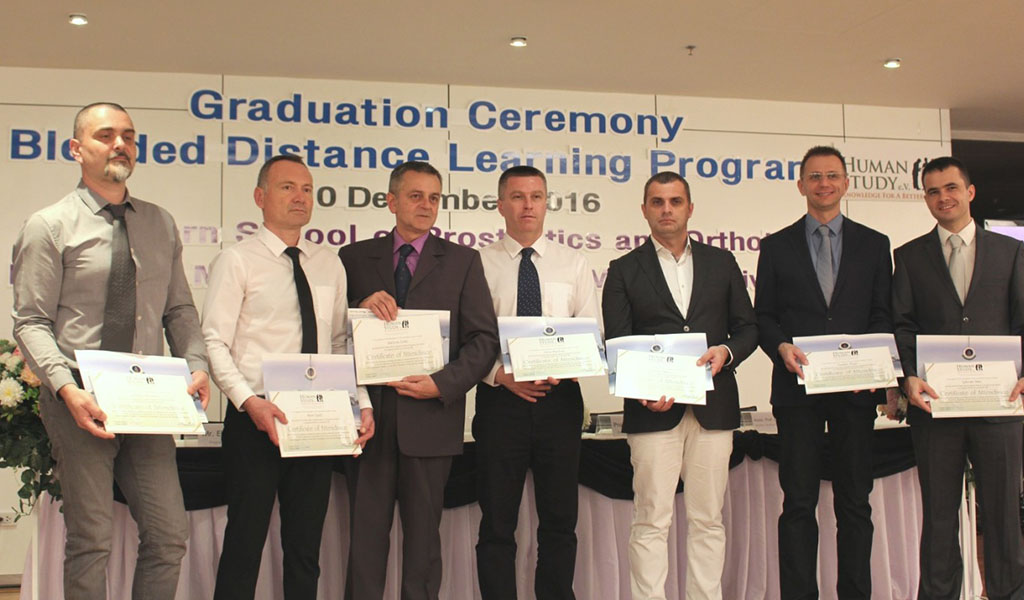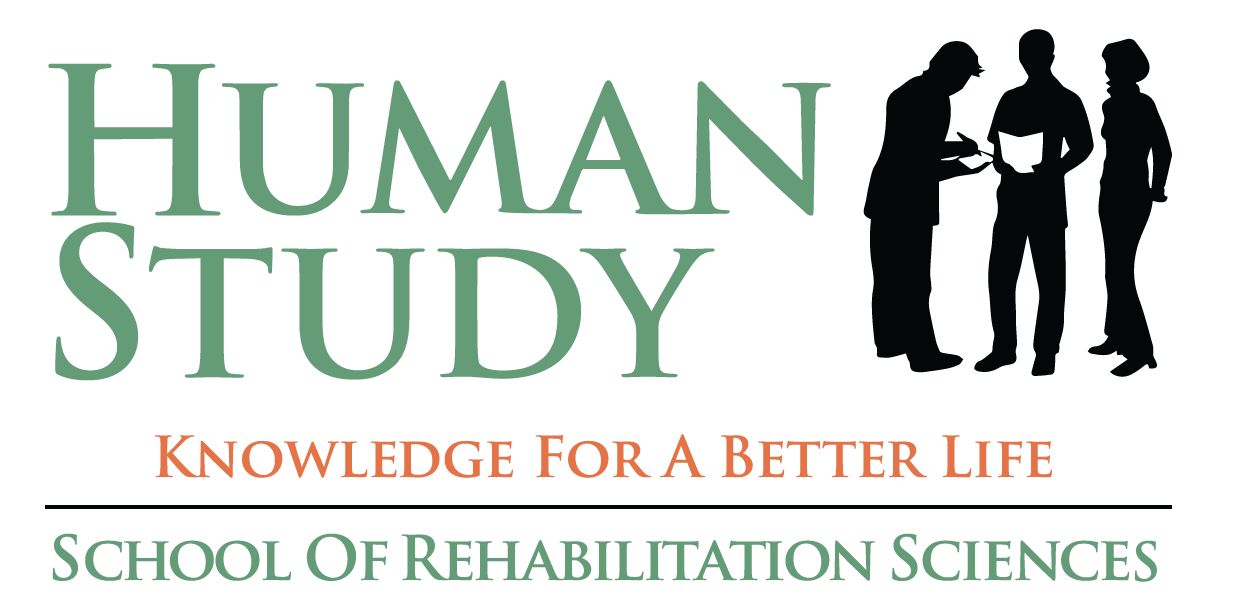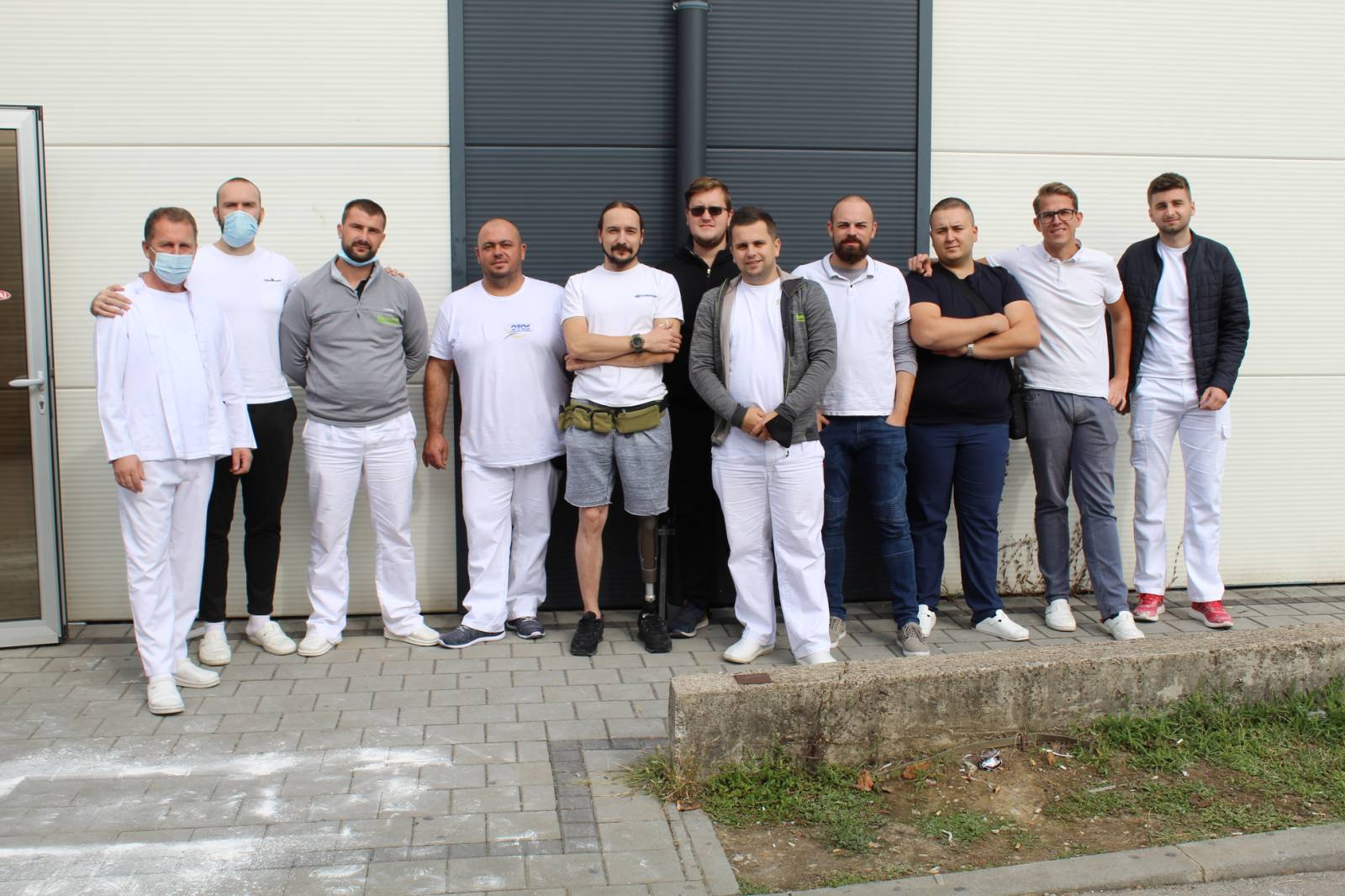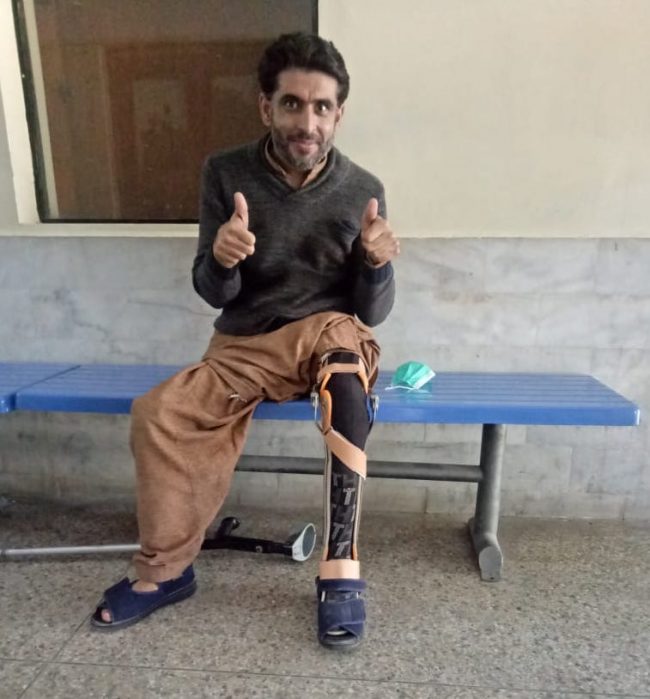Human Study Bachelor in P&O Program Acquired ISPO Accreditation on Category I Level

Human Study Bachelor in P&O Program Acquired ISPO Accreditation on Category I Level
For the first time in history, blended learning was used to lead a group of students to Bachelor of Science in Prosthetics and Orthotics and ISPO Category I Accreditation at the same time.
The BSc educational program in prosthetics and orthotics, developed and implemented by Human Study in collaboration with the Sirindhorn School for Prosthetics and Orthotics (SSPO) of the Mahidol University in Bangkok, and ISPO has been accredited by the ISPO as a Category I upgrade program.
[custom_frame_center shadow=”on”]
 Graduates with Bill Neumann, HS Board Member
Graduates with Bill Neumann, HS Board Member
[/custom_frame_center]
The first students to be educated in this educational program were a group of 7 best Category II (technician level) graduates who were educated through a 2.5-year vocational training program made available by Human Study for practitioners in the region of Southeast Europe since 2007. This pilot project was aimed at upgrading the education level of a group of motivated professionals to the university (undergraduate) degree and at the same time to enable them the highest professional qualification according to the international standards, the Category I qualification.
Our efforts in the region started with implementation of our vocational training program, which acquired international accreditation from ISPO in 2010, through which several generations of students have been educated. The availability of this educational program for professionals in the region, as the only available full professional profile training in prosthetics and orthotics in the region since the 1990s, led to development of a solid regional base of qualified technicians from Bosnia, Croatia, Serbia, Macedonia and Slovenia, many of whom are now fit to treat more cases per year and offer better services to their patients. This is very important since the wars of the 1990s have left many people injured and depending on regular service provision. To that, the region is heavily polluted by mines, which continue to jeopardize the lives of people to this day.

It is worth explaining that the roof organization for prosthetics and orthotics – International Organization for Prosthetics and Orthotics (ISPO) – classifies prosthetic and orthotic professionals into three categories: category III are bench-workers, category II are P&O technicians, and category I are professional prosthetists and orthotists. Contact with patient and direct patient treatment is ideally performed by the latter group, though in circumstances where no category I professionals are available, category II technicians are seen as a good compromise. Category II technicians should normally undergo a comprehensive vocational training over a period of 2-3 years. Category I professionals are normally a college or university level program. Our educational programs in the region have been aimed at creating a critical mass of professionals on both Category II and Category I qualification levels, to foster the development of the profession towards implementation of international standards in education, so that in turn service delivery to people with disabilities can approach international standards as well.
The accreditation of this program as an Upgrade to Category I program by the ISPO proves the success of our pilot project. This development is actually ground-breaking for the profession in general, since it demonstrated that Human Study blended learning model is an excellent solution for delivering high-level educational programs in prosthetics and orthotics. The model can be used to reach distant students and places where education is desperately needed, but traveling to and from the region presents a challenge. With this model of education, high-level trainers can teach those who live in regions where no trainers are available at all.
Our graduates from the Southeast Europe are very enthusiastic and motivated after their graduation. They want to use their experience and education for the benefit of the profession and patients in their countries. Ljubomir Matić, our graduate from Belgrade, is “most grateful that I was able to participate in this program from my home, not having to leave my family or my patients to improve my knowledge and qualify. Blended learning is a fascinating way to deliver education to people, even in our profession, where practical training is of crucial importance. This should be applied everywhere!” For practicing prosthetists and orthotists, it is often very difficult to leave their patients for a period of 2-3 years or even several months to pursue further professional development. Most of them are employed in private companies who are willing to put their staff through education, but are looking for quicker solutions, thus a comprehensive education taught in the classic presence-model is ruled out from the beginning. Some of our students are small company owners themselves cannot afford to leave their work for extended periods of time. Using blended learning to reach out to them pays off on all possible ends, especially when no local school is available. Blended learning makes the education accessible, affordable and keeps practitioners in their workshops.
With this qualification, graduates are capable of training others, even newcomers into the profession. This is very important, especially for regions where the lack of professional cadre is very severe and the demand for services high due to wars and other disasters. It is usually in these regions that training in prosthetics and orthotics is not available at all. Svetislav Isailov from Northern Macedonia says that he plans to open his own company, so that he can employ newcomers and train them, which will increase the accessibility of services to patients. “My patients are satisfied and they see me as a clinician who offers quality treatment. Number of patients and devices I produce per year has increased since my educations in HS. I am also now better acknowledged by doctors as a professional and they appreciate my work with patients.” Our students have the unique opportunity to immediately apply the learned knowledge and skills to their daily work, as they go through their studies. Svetislav has been offered a better position from his current employer, but he is making plans to open his own company, to be able to serve more patients himself and also to employ newcomers into the profession and train them.
Miloš Opačić, a medical doctor who dedicated his life to prosthetics and orthotics, says that “before I became a student in this program, I had not been able to access such great amount of valuable knowledge on orthopedic devices. The knowledge we gained through this program is truly unique”.

We see the success of this program as a solution for the world where the extremely critical shortage of trained & competent prosthetic and orthotic clinicians and their crucial importance to society is often neglected. This is especially the case in the developing world. The World Health Organization estimates are that “more than 600 million people in the world experience disabilities of various types and degrees with an estimated 80% of the world’s disabled people living in developing countries” (WHO, 2005). “The global disabled population is increasing as a result of population growth, ageing, chronic conditions, malnutrition, war, landmines, violence, road traffic, domestic and occupational injuries and other causes often related to poverty” (WHO, 2005). Currently, more than 75% of developing countries have no accredited prosthetics and orthotics training programs, which means that in these regions and countries training of people who provide services to people with disabilities is non-existent. Blended learning comes in as a solution which can be used to reach out to most distant places of the world, offering internationally accredited and standardized, comprehensive educational programs. Blended learning does not depend on local educational infrastructure, so no immediate and huge investments are required for education to start. Regional development is spurred through development of local training capacities by means of these educational programs.
We rejoice in this acknowledgement of our approach to this problem and our work, and we will take it as motivation to revolutionize education in prosthetics and orthotics around the world.




